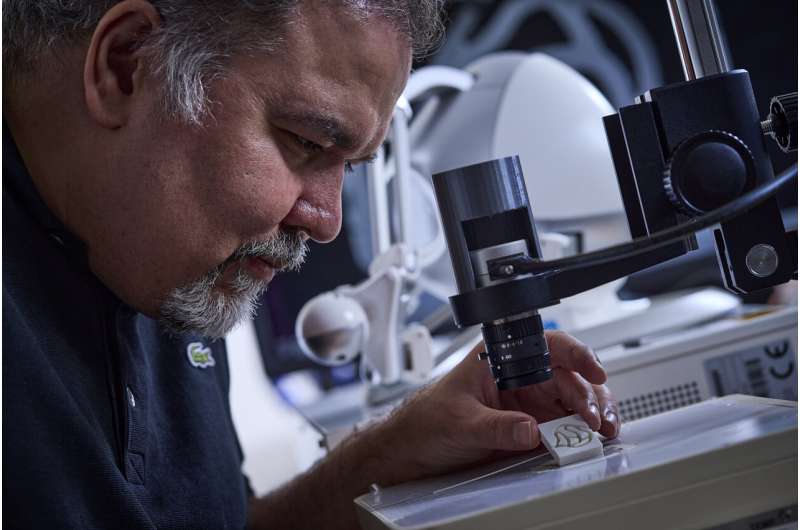Swarms of microrobots could be solution to unblocking medical devices in body

Swarms of microrobots injected into the human body could unblock internal medical devices and avoid the need for further surgery, according to new research from the University of Essex.
The study is the first-time scientists have developed magnetic microrobotics to remove deposits in shunts—common internal medical devices used to treat a variety of conditions by draining excess fluid from organs.
Shunts are prone to malfunctioning, often caused by blockages due to a build-up of sediment. The sediment not only narrows and obstructs liquid passing through the shunt, but it also affects the shunt's flexibility. This leads to patients needing repeated, invasive surgeries throughout their lives either to replace the shunt or use a catheter to remove the blockage.
However, this new research, led by microrobotics expert Dr. Ali Hoshiar, from Essex's School of Computer Science and Electronic Engineering, has shown there could be a wireless, non-invasive alternative to clearing the blockage in a shunt.
Published in the IEEE Transactions on Biomedical Engineering journal, Dr. Hoshiar and his team have shown that a swarm of hundreds of microrobots—made of nano size magnetic nanoparticles—injected into the shunt could remove the sediment instead.
"Once the magnetic microrobots are injected into the shunt they can be moved along the tube to the affected area using a magnetic field, generated by a powerful magnet on the body's surface," explained Dr. Hoshiar. "The swarm of microrobots can then be moved so they scrape away the sediment, clearing the tube.
"The non-invasive nature of this method is a considerable advantage to existing methods as it will potentially eliminate the risk of surgery and a surgery-related infection, thereby decreasing recovery time."
With each microrobot smaller than the width of a human hair, once the swarm has done its job, it can either be guided to the stomach via a magnetic field or bodily fluid, so they leave the body naturally. Because the microrobots have very high biocompatibility they will not cause toxicity.
The research also found a direct relation between the strength of the magnetic field and the success of scraping away the sediment in the shunt.
This is the first proof-of-concept experiment using microswarms for opening a blockage in a shunt. The next stage of this research is to work with clinicians to carry out trials. The researchers are also looking at how the concept can be used to other applications.
More information: A. Moghanizadeh et al, A novel non-invasive intervention for removing occlusions from shunts using an abrading magnetic microswarm, IEEE Transactions on Biomedical Engineering (2022). DOI: 10.1109/TBME.2022.3192807
Provided by University of Essex



















